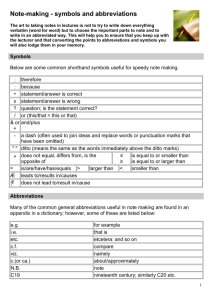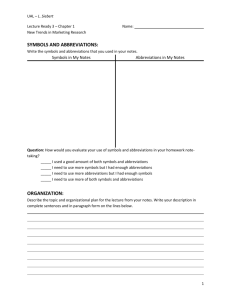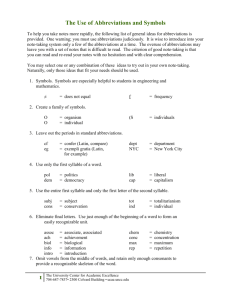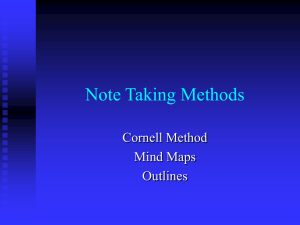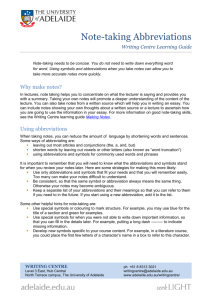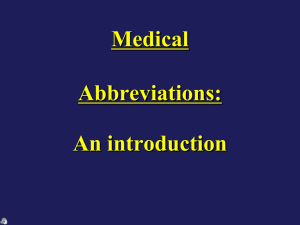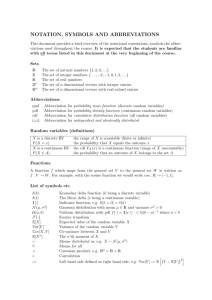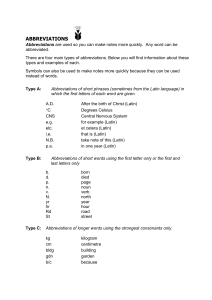symbols and abbreviations
advertisement
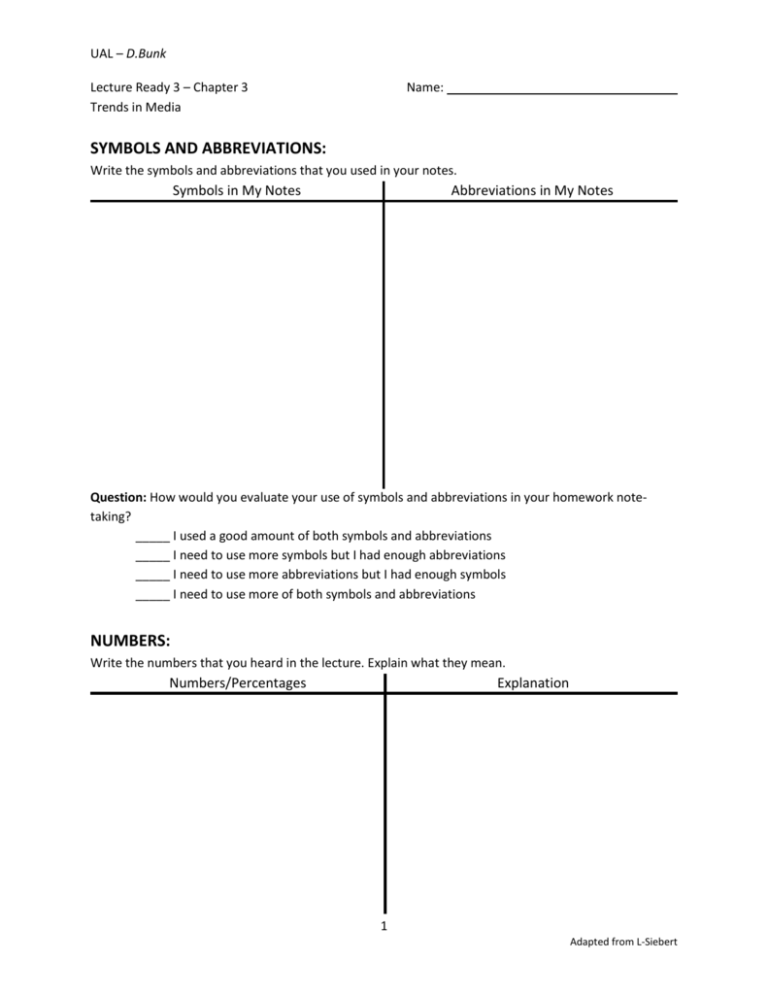
UAL – D.Bunk Lecture Ready 3 – Chapter 3 Trends in Media Name: SYMBOLS AND ABBREVIATIONS: Write the symbols and abbreviations that you used in your notes. Symbols in My Notes Abbreviations in My Notes Question: How would you evaluate your use of symbols and abbreviations in your homework notetaking? _____ I used a good amount of both symbols and abbreviations _____ I need to use more symbols but I had enough abbreviations _____ I need to use more abbreviations but I had enough symbols _____ I need to use more of both symbols and abbreviations NUMBERS: Write the numbers that you heard in the lecture. Explain what they mean. Numbers/Percentages Explanation 1 Adapted from L-Siebert UAL – D.Bunk ORGANIZATION: Describe the topic and organizational plan for the lecture from your notes. Write your description in complete sentences and in paragraph form on the lines below. LECTURE TRANSCRIPT: OK. So now let’s think. How is your experience different from, say, 50 years ago? What are some of the key changes? Well, in the middle of the Twentieth Century, people in the United States had only television, radio, records, movies, and print media. Today, early in the Twenty First century, we have many more options. Let’s see. There’s both a larger variety of technology available. That is, the number of different devices and types we use is greater. We have…or had, in some cases…because as we speak some of these devices are becoming obsolete…but no matter video cassettes recorders, digital video recorders…or DVRs, compact discs, digital video discs, computers. And we also have online activities now—e-mail, gaming, music streaming, just to name a few. 2 Adapted from L-Siebert UAL – D.Bunk Now, look at your teacher’s sample notes for this part of the lecture on the screen. Copy your teacher’s notes in the box. Question: In what ways are your notes and your teacher’s notes for this part similar or different? Similarities: 3 Adapted from L-Siebert UAL – D.Bunk Differences: RETREIVAL AND APPLICATION: Multiple Choice: circle the best choice. Also, circle and label the place in your notes where you found the correct information. 1. The topic of the lecture is: a) email b) television c) children’s media d) iPods 2. Which technology was not available 50 years ago? a) T.V.s b) DVRs c) records d) movies 3. Which one was not mentioned about technology? a) It’s getting cheaper. b) It’s more accessible. c) It’s more portable. d) It’s more difficult to use. 4. A study by the Kaiser Family Foundation found that kids between 8 & 18 spend _________ hours a day using media. a) 3.0 b) 4.5 c) 6.5 d) 8.5 5. A new trend in media use is _____________________. a) multitasking b) surfing the Internet c) blogging d) social networking 6. How do researchers feel about the effects of doing several things at the same time while using media? 4 Adapted from L-Siebert UAL – D.Bunk a) They’re uncertain. b) They think it helps build skills. c) They feel it creates boredom. d) They feel it increases traffic accidents. 7. According to one study, __________ of media time is spent using two or more types of media at the same time. a) 20% b) 26% c) 30% d) 40% 8. Having a T.V in the bedroom increases the amount of time they spend watching T.V. by how much? a) 1 hour per day b) 1.5 hours per day c) 2 hours per day d) 10.5 hours per day 9. Some people feel that exposure to media helps prepare children for real life. a) T b) F 10. Some research shows that children do not have the patience to ______________. a) follow instructions b) sit through a movie c) write a research paper d) read long texts Paragraph Short Answers: Use your Chapter 1 notes to answer the following questions. Your answers should be written in complete sentences using grammar structures appropriate for level 4 learners. 1. How has the change of media over the past fifty years affected the present? ______ 5 Adapted from L-Siebert UAL – D.Bunk 2. What did the results from the Kaiser Family Foundation Study show? Explain the results in your own words. ______ 3. What is the effect of having a TV. In your bedroom? Explain why. ______ 6 Adapted from L-Siebert
